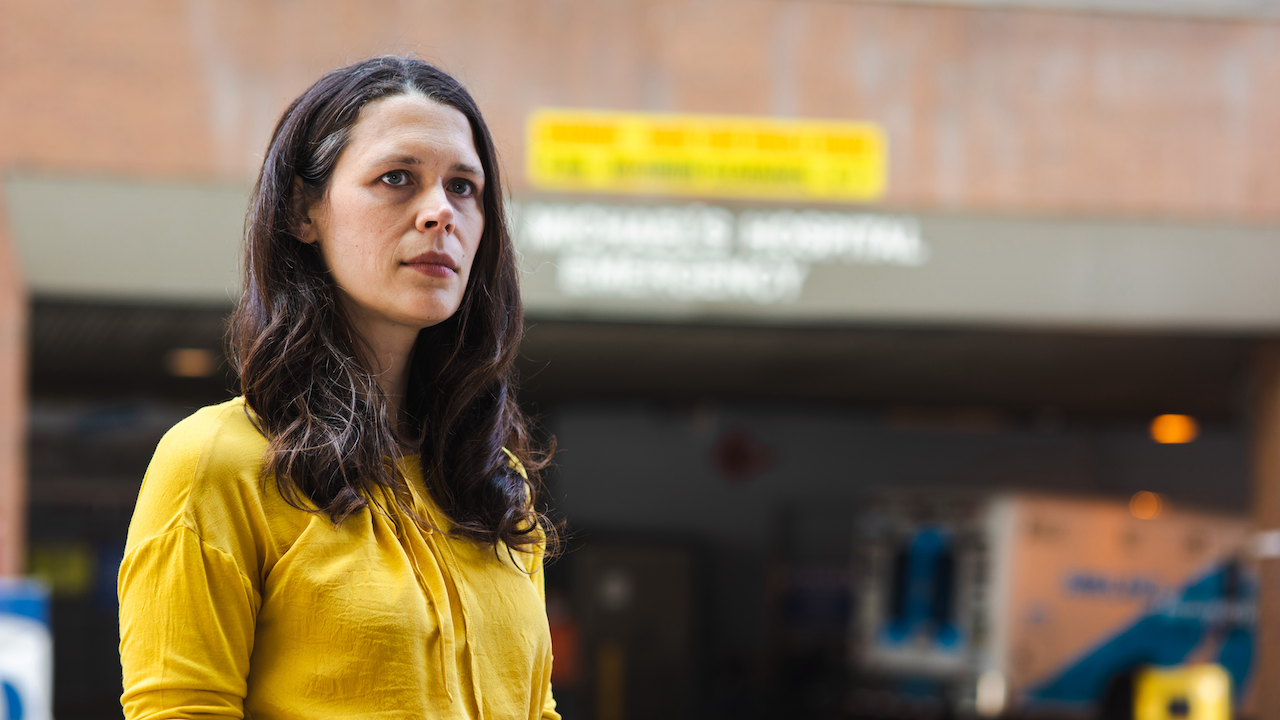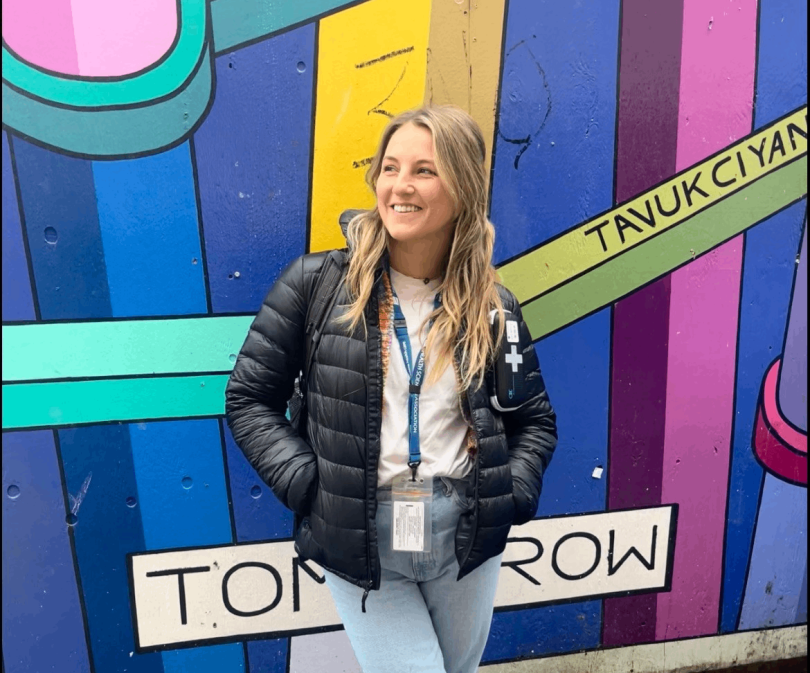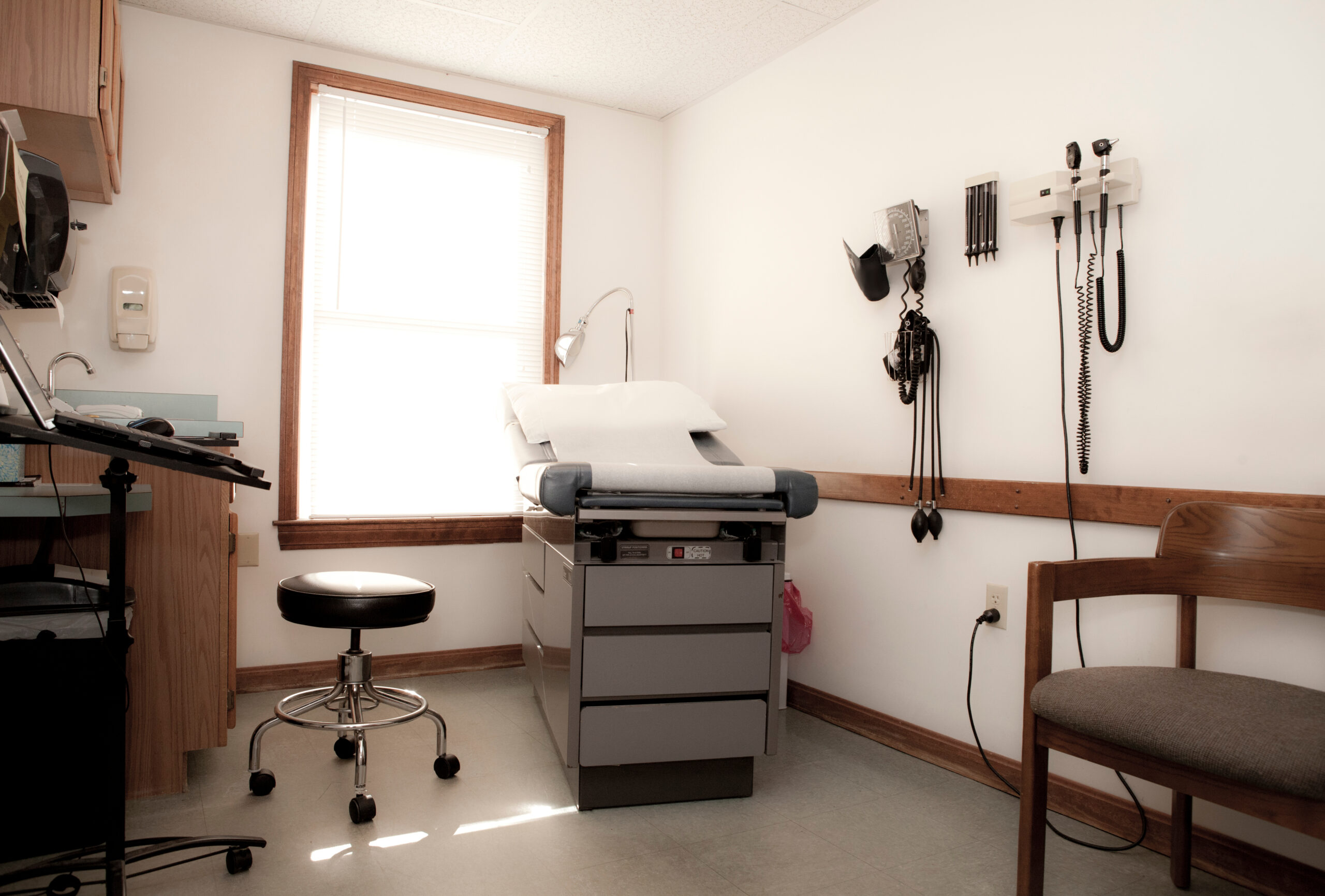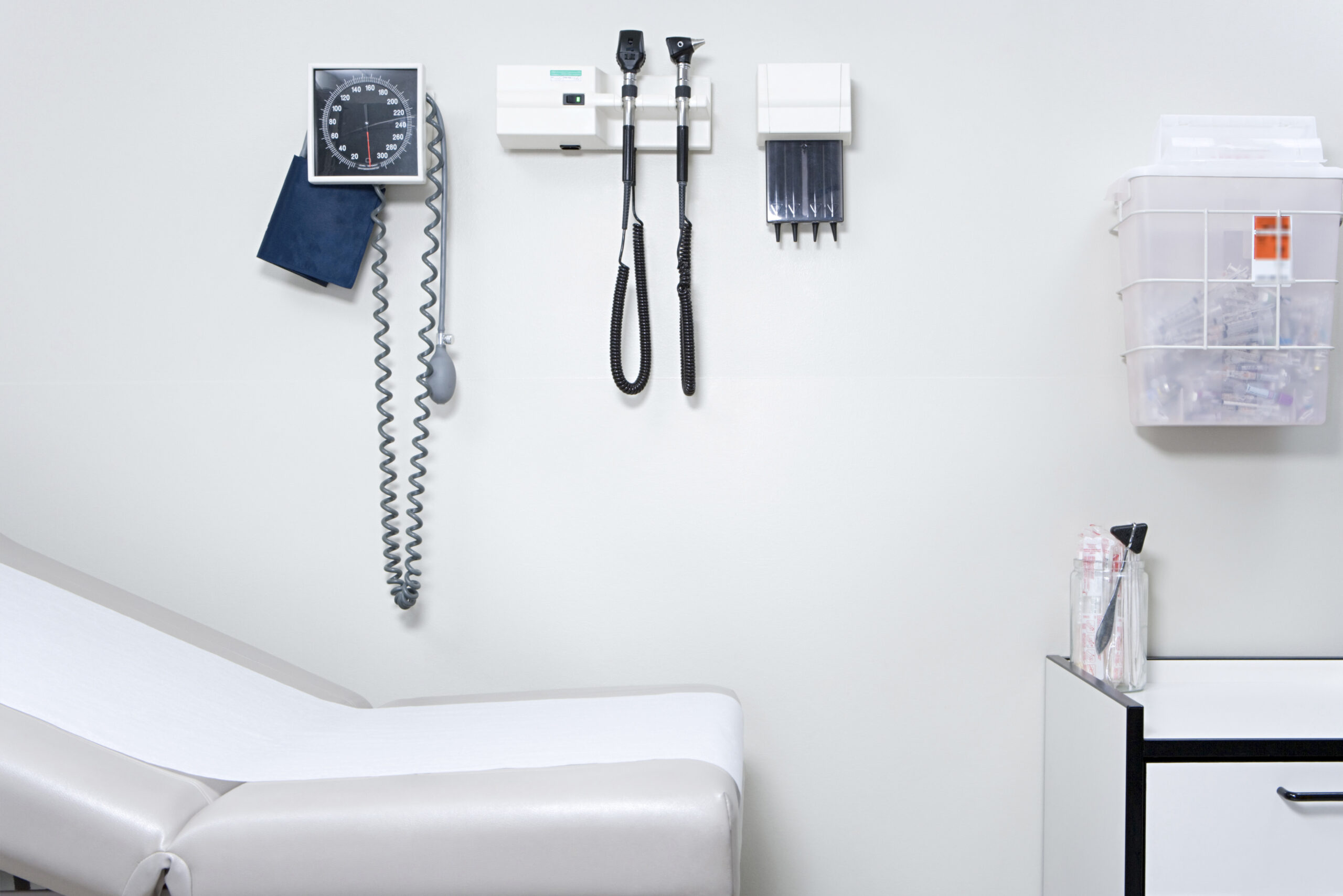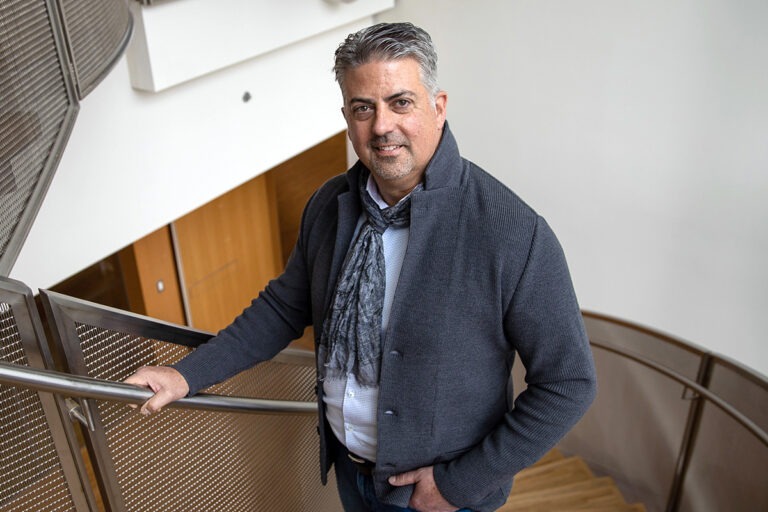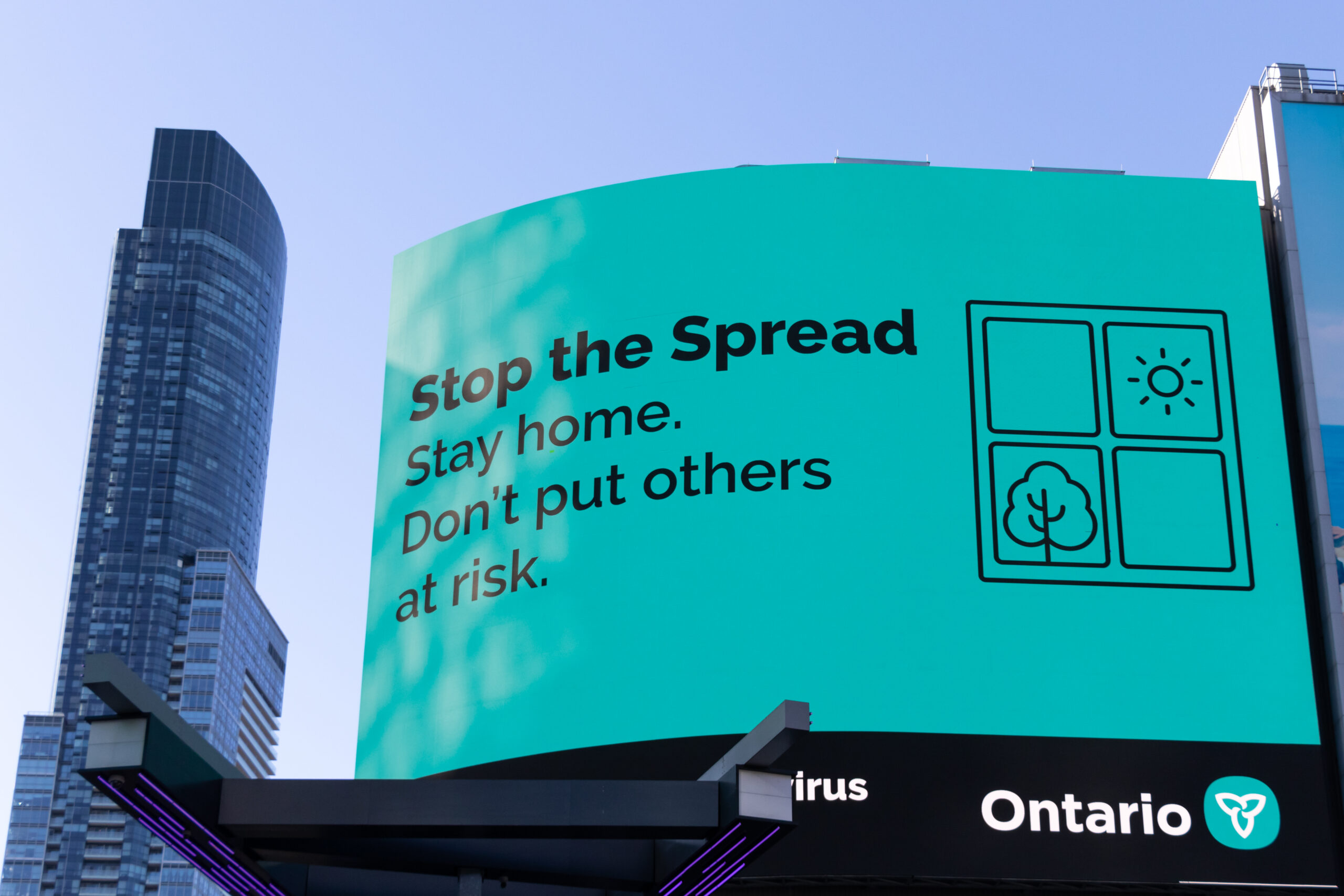Dr. Tara Gomes recently spoke with The Canadian Press about her new study that found that the most rapid spike in overdose deaths during the pandemic was within shelters. The report takes a closer look at the demographics of this group. “There’s a real concern that some of the policies that have existed within shelters, and the fear that people have of being kicked out of a shelter if their substance use is noted, is leading to people using drugs alone. And that’s increasing the risk of death,” says Dr. Gomes.
Author: Samira Prasad
Pilot project helps ease discharge of patients who are unhoused
From Providence Health Care’s The Daily Scan
For many patients, being discharged from the hospital is a welcome event that means a return to the comfort and stability of home. But what happens when a patient doesn’t have a home to go to?
“Anyone who’s worked with unhoused populations knows the challenges that come with follow-up care post discharge,” says St. Paul’s Hospital Medicine Outreach Social Worker Alexandra Mackinnon. “Navigating the health care system becomes exponentially more challenging when you’re unhoused, have few supports, and have no way of being contacted.”
A new pilot program at St. Paul’s aims to improve the hospital experience and post-discharge health and social outcomes for people experiencing homelessness. Funded by Staples, the Navigator Program launched in September 2023 and is modelled after a similar program at St. Michael’s Hospital in Toronto.
Meeting people where they’re at
As the program social worker, Mackinnon splits her time between the hospital and the community. She works closely with patients before and after discharge, then provides a warm hand-off to community case managers and other service providers.
“I meet people where they’re at in hospital, assess their needs and follow them for 90 days after discharge,” she explains. “This could involve attending follow-up appointments, connecting them to primary care, advocating for more supportive housing – and anything in between.”
The program recognizes that, compared to the general population, patients experiencing homelessness often have sub-optimal hospital experiences, are more likely to self-discharge, have higher readmission rates, and face unique struggles in following discharge plans.
“Having an outreach worker embedded in the hospital is beneficial because we have access to medical records and can bridge the gap in collaboration with community partners to get people the care that they need,” Mackinnon says.
She’s hopeful the pilot program expands and become a permanent fixture.
One in five adult Canadians doesn’t have a family doctor, study finds
The OurCare study found that more than one in five Canadian adults report having no family doctor. Lead scientist, Dr. Tara Kiran, spoke with Vancouver is Awesome about the results. “The degree of provincial variation was surprising,” said Kiran. “We have one country and this study really speaks to how we have 14 different health systems.”
One in 5 adults in Canada without access to primary care
This article from Hospital News takes a look at the findings from the OurCare study, recently published in CMAJ. The study surveyed over 9000 people in Canada about their experiences and expectations for primary care in Canada. “The crisis in access to primary care is in stark contrast to the values that people in Canada hold dear – that everyone should have access to health care regardless of where they live and who they are,” says Dr. Kiran.
Study underscores Canadians’ problems with access to care
Dr. Tara Kiran was recently quoted in this Medscape article covering the publishing of the OurCare study findings in CMAJ. OurCare is the largest pan-Canadian primary care study to date. “There’s about 6.5 million people in Canada who don’t have a primary care clinician. Given that primary care is what I think of as the front door to the healthcare system, when that door is closed, it has lots of consequences for your health,” says Dr. Kiran
Canada has a primary health-care crisis. Here’s how to fix it
“In every neighbourhood in the country, just as there are schools for our children, there should be a primary-care home — or centre — served by a team of doctors, nurse practitioners, nurses, dieticians, therapists, social workers, and others,” writes former federal health minister Dr. Jane Philpott. This op-ed for the Toronto Star draws upon MAP’s national OurCare study, lead by Dr. Tara Kiran.
Syphilis cases surge in Canada
Dr. Sean Rourke was quoted in the Niagara Falls Review‘s coverage on the rise in syphilis cases in Canada. in 2022 alone, Canada recorded nearly 14,000 cases of infectious syphilis nationwide, along with 117 instances of early congenital syphilis. This represents a nearly 15-fold increase from just eight cases reported among infants across the country merely five years earlier.
Thousands of Canadians are on doctor wait-lists. Are they effective?
Dr. Tara Kiran recently spoke to CBC News about the need to make family doctor waitlists accessible to vulnerable populations, along with those new to Canada who may not speak the language. Dr. Kiran said she believes a centralized wait-list is the way forward, as there needs to be an organized way for people to access care.
Scientists, clinicians across Canada preparing for future pandemic threats
The Canadian federal government recently announced funding for research projects focused on strengthening Canada’s pandemic preparedness. Dr. Andrew Pinto recently spoke with The Canadian Press about Prepared, a project that will focus on screening for any new viruses or pathogens that start to appear in patients in emergency rooms or primary-care clinics. “As a public health specialist and as a practising physician, I would very much anticipate there being another respiratory pandemic in the future. The challenge is we don’t know when it will be or what it will be,” said Dr. Pinto.
Unity Health Toronto awarded $18.9M to create ‘coast-to-coast shield’ to protect Canada in the next pandemic
By Marlene Leung, Unity Health Toronto
Unity Health Toronto has received $18.9 million in federal funding to create a national pandemic preparedness system that will improve Canada’s capacity to identify and track new pathogens, monitor disease spread and speed up research and development of diagnostic tests, vaccines and therapeutics.
The PREPARED network will enlist up to 50 primary care clinics and emergency departments across Canada, plus research institutions and industry partners to build a coordinated ecosystem that can swiftly respond to new viruses or pathogens. The PREPARED grant is one of the largest operating grants Unity Health Toronto has received.
The goal is to prepare Canada for the next pandemic — which is only a matter of time, says Dr. Andrew Pinto, project lead and scientist and family physician at St. Michael’s Hospital, a site of Unity Health Toronto.
“I was in medical school during SARS and joined meetings that tried to tackle the rapid spread of a novel virus. Even with learnings from other flu pandemics, Canada still faced the same challenges when COVID arrived,” said Pinto, who is also the director of the Upstream Lab. “We didn’t have an early warning system. We didn’t have a coordinated system to rapidly enroll patients in critical research studies.”
The funding from the Canada Biomedical Research Fund (CBRF) was announced on May 6 in Montreal. PREPARED is one of four research programs endorsed by the Canadian Hub for Health Intelligence and Innovation in Infectious Diseases (HI3) that was funded by CBRF in 2023 with a mandate to bolster Canada’s biomanufacturing capacity and readiness to respond to emerging health threats.
A new ecosystem built on primary care
The goal of the PREPARED network is to build an ecosystem that can be activated from the moment there is news of a novel pathogen emerging, says Norman Umali, Upstream Lab, St. Michael’s Hospital research pharmacist and project team member.
In the new ecosystem, primary care clinics and emergency departments across Canada would be on alert for any signs of the new pathogen. When a patient goes to their family physician or local emergency department showing symptoms, the patient would be assessed and given a diagnostic test that would confirm within minutes whether the patient has the virus. Swabs from the positive patient would be taken to help identify and sequence the exact pathogens circulating in the community. These samples could also be used to help build the next diagnostic test or vaccine.
Data from patients’ electronic records could be rapidly and securely accessed to support clinicians in decision making, while also contributing to national disease surveillance efforts. As well, patients who test positive would be invited to participate in research studies and trials to gain access to the latest therapies and to help determine which therapies are beneficial.
The ecosystem builds on a Canadian network of primary care clinics and emergency departments. The project team includes leaders of 16 primary care research networks that collectively serve more than 2.5 million Canadians, from British Columbia, Alberta, Manitoba, Ontario, Quebec and Newfoundland and Labrador.
The team has also consulted and will collaborate with 11 industry partners with expertise in specimen collection, diagnostics, genomics, surveillance and data management, therapeutics, gene therapies and vaccine development.
Building a resilient, adaptable system
Beyond tracking acute respiratory infections, the team sees other future applications for this model, says Dr. Benita Hosseini, Upstream Lab research scientist and project co-lead.
“We would like to adapt the ecosystem to track other infectious diseases, such as mpox, or other chronic conditions. It could also be adapted to perform surveillance during other public health emergencies, such as those driven by climate change,” she said. The goal is to build an adaptable, patient-centered healthcare system, to improve our readiness for current and future health challenges and for transforming healthcare efficiency and effectiveness.
Part of the project is to train the next generation of researchers through the PREPARED Talent Development Program, Hosseini adds. In this program, trainees can choose a learning stream to focus on surveillance, data science, Implementation Science or Community-Based Participatory Research.
Pinto notes that in the United Kingdom, clinicians were able to quickly enroll patients into clinical trials within weeks of the first COVID cases being detected. As a result, the U.K. led the world in understanding what therapies worked in treating COVID, he said. One of the goals of PREPARED is to facilitate linkages to research trials by integrating recruitment efforts within primary care clinics and emergency departments, he said.
“We are excited about the opportunity to create a coast-to-coast shield that will help protect Canada and Canadians in the future,” said Pinto.

